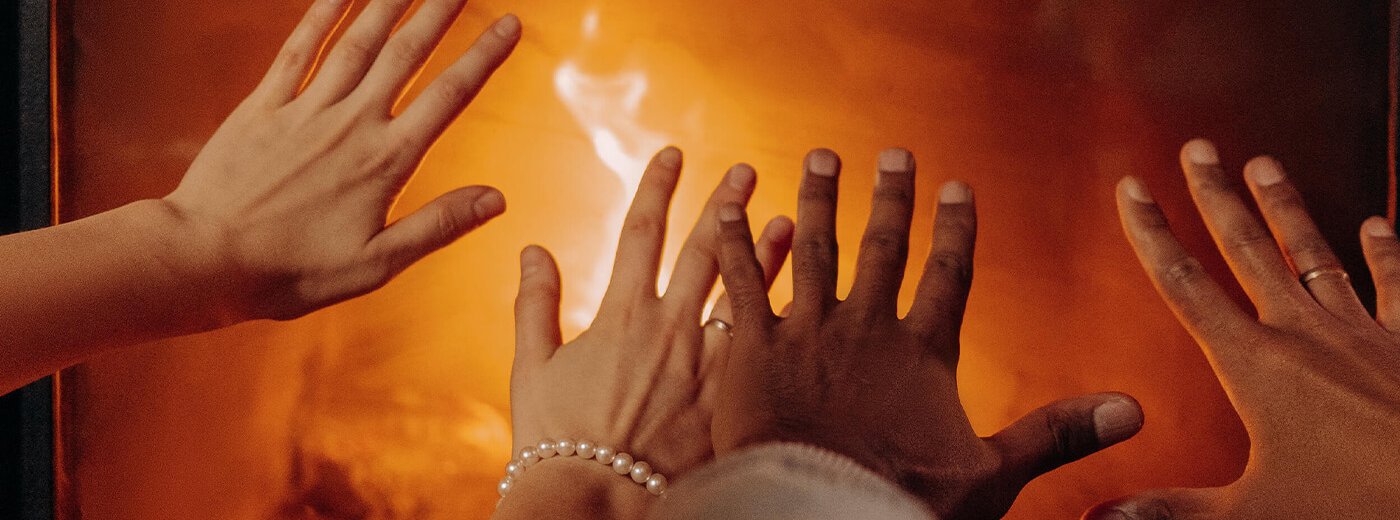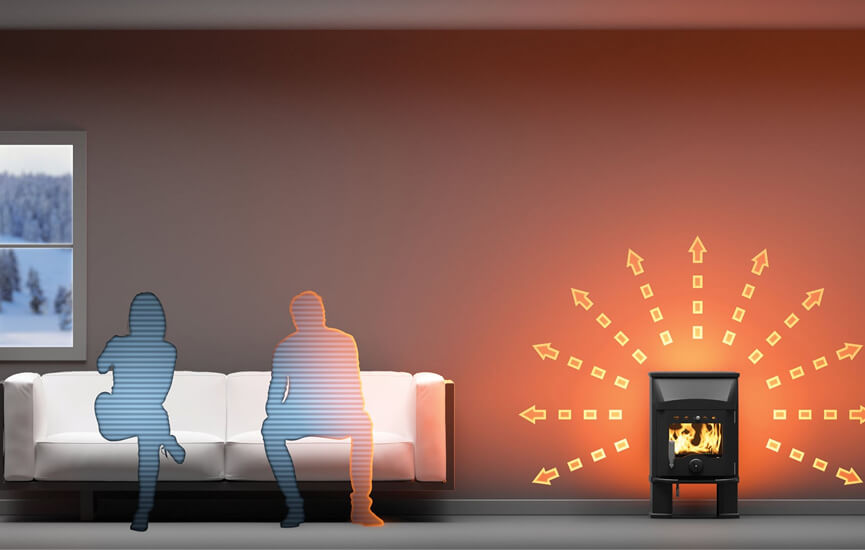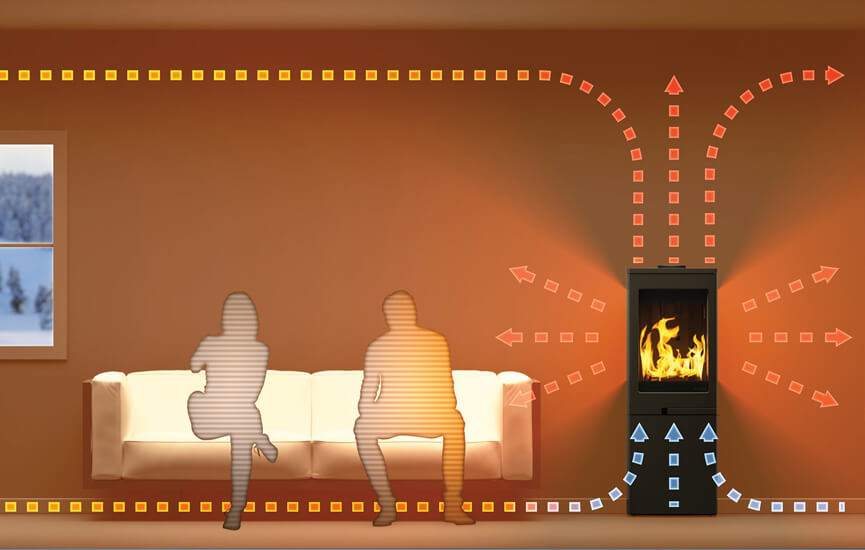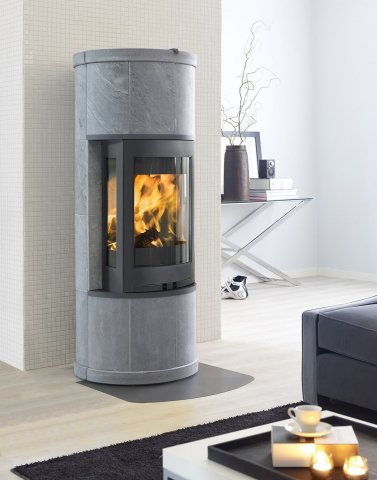Which fireplace heats best?
A fireplace or logburner provides that cosy fireside atmosphere, is relaxing and, not least, saves you heating costs at a time of high energy prices. But how to choose the perfect fireplace for your home heating needs?
A fireplace or logburner provides that cosy fireside atmosphere, is relaxing and, not least, saves you heating costs at a time of high energy prices. But how to choose the perfect fireplace for your home heating needs?
Are you looking to buy a logburner mainly for the cosy look and feel? To boost your space heating at the coldest times of year and save electricity? Or will it be the primary source of space heating for your home? And what size space are you looking to heat up? We have a large range of logburners and fireplaces, specifically designed to cater for individual requirements. Our retailers can guide you through the options to find a fireplace that is right for you. But it is an advantage to have an idea about how you will be using your fireplace before consulting the experts.
Already know which logburner or fireplace you want? Contact your nearest retailer today!
When you start thinking about the requirements to be met by a logburner, it will be helpful to know a bit about the different types of heat generated by the various types of fireplaces:
Most logburners give off radiant heat to a greater or lesser extent. Radiant heat is where the air and surfaces (and cold bodies) around the stove heat up rapidly. Radiant wood stoves typically become extremely hot, which means they can’t be installed close to flammable walls or furniture. This type of heating is ideal in high-ceilinged interiors, draughty homes or anywhere you want to enjoy quick, intense and direct heat from your logburner.
Tip!
A fan is often a great solution in cold weather for spreading the heat in a room and providing a stable and comfortable indoor climate.
The main difference between a convection stove and a radiant stove is the design of the side walls. A convection stove has plates on the sides of the firebox to enable convection heating. The cold air is drawn through the air channels, is heated up inside the channels between the plates before it rises and emerges through the vents on the top of the stove. This means that the heated air circulates, rises and spreads around in the room, and is gradually forced down in the room as the surrounding air heats up. The result is less rapid and intense heating compared with radiant heat, but the advantage is more even heating of the entire space. This process also means that the logburner itself does not become blazing hot, making it easier to position in your living area than a radiant heat burner.
This type of real-fire heating appliance is ideal to install if log burning will be your main source of home heating in the coldest months if your ceiling is not very high or you have furniture in the way that blocks the radiant heat.
In several of our logburners and fireplaces (including the Jøtul F 483 logburner) we have combined radiant and convection heat, specifically for homes not installed with a firewall. This allows them to be installed close to the wall while guaranteeing you a comfortable indoor temperature.
In addition to deciding on the type of heating you require, you should also consider various heat-retaining logburners, so you get the most out of your heating. With both soapstone (steatite) stoves and logburners with heat storage at the top you benefit from heating stoves that continue to generate heat long after the last log has burnt out.
Heat-retaining fireplaces and logburners generate heat long after the last log has burnt out.
Soapstone logburners provide steady, less-intense and comfortable heating for longer. The more soapstone, the more heat you can store. You avoid having the room temperature reaching highs and dipping to lows, achieving more stable space heating. A solid soapstone stove is typically heated through within a couple of hours, and can continue to give off heat for up to twelve hours after your fire has gone out.
If you choose a wood-burning stove with the possibility of heat storage, you can add heat-absorbing stones in the chamber on top (such as the Jøtul FS 162 Advance wood-burning stove). The stones absorb the heat from the wood stove over time. Several wood-burning stoves like these often have a valve on the top - when it is closed it keeps the heat in the chamber so that the stones are heated. When you have finished firing, you can open the valve, and then release the stored heat into the room. This can provide up to twelve hours of extra heat after the last log has gone out.
Can give off up to twelve hours of additional heat after the last log has burnt out.
You might be thinking that the biggest fireplace is going to give you the most heating, but it may not necessarily be the best choice for you and your fireplace project. Your home space heating requirement depends on how well insulated your home is, the size of your windows, and the climate in your location. If you buy an oversized fireplace for a small living room, the heat may be so intense you are tempted to prevent the stove from reaching its ideal operating temperature, and can result in sooting up of the panes on your fireplace. We recommend measuring the size of the living area you want to heat up, and hand over the dimensions to your nearest retailer, so the experts can help you find the fireplace that is right for you.
Learn more about choosing the right size of fireplace
With a wealth of different types of logburners and fireplaces available, we recommend consulting your nearest retailer on your requirements for heating, design, heating space and home parameters, so they can easily help you find your new dream fireplace. In our large range, you are guaranteed to find a logburner or fireplace to match your requirements, whether or not you want heat retention, to give you homely heating for many years to come.






